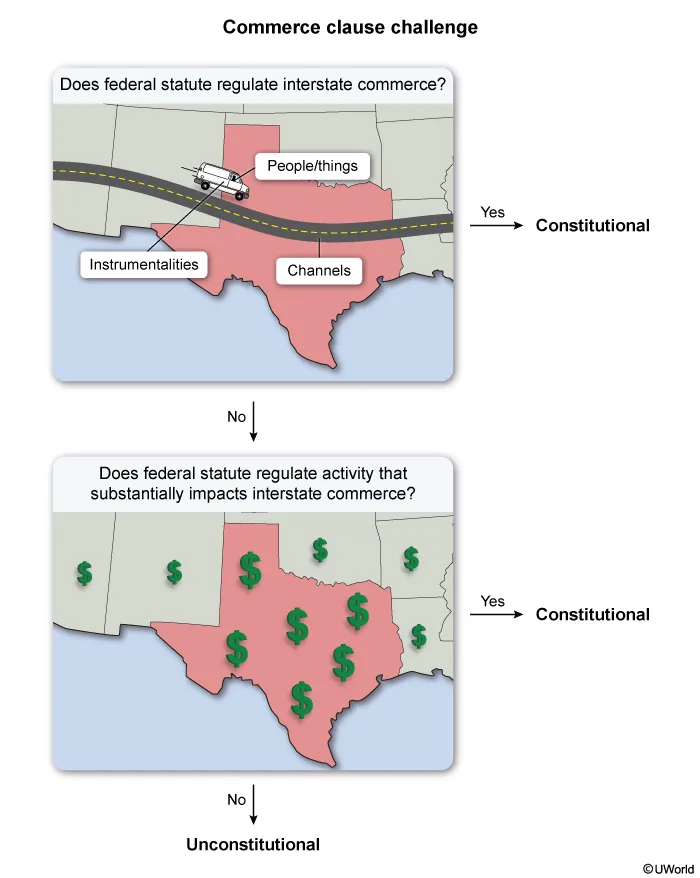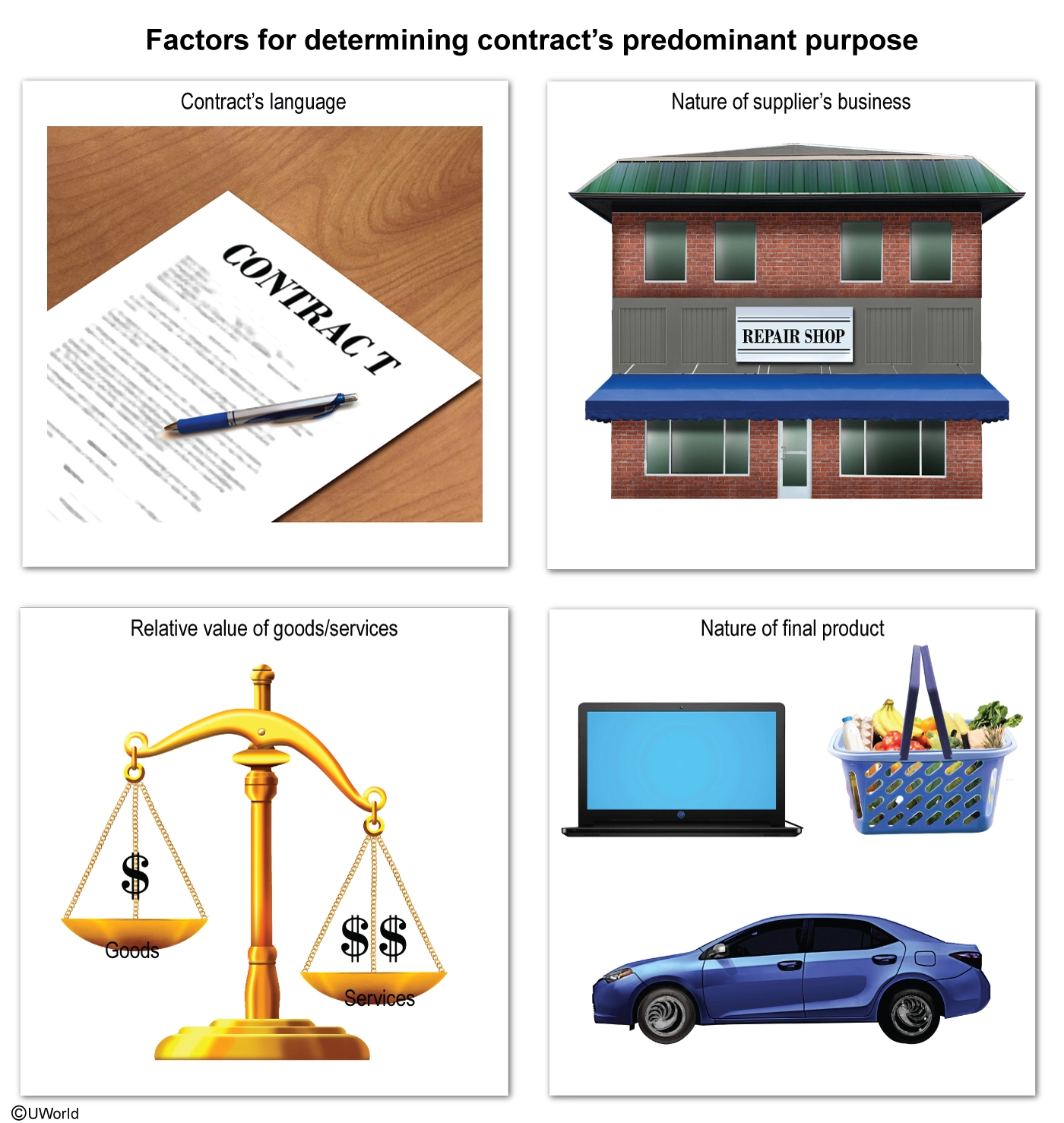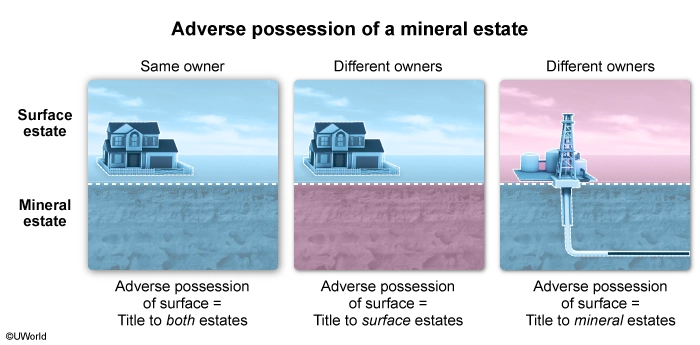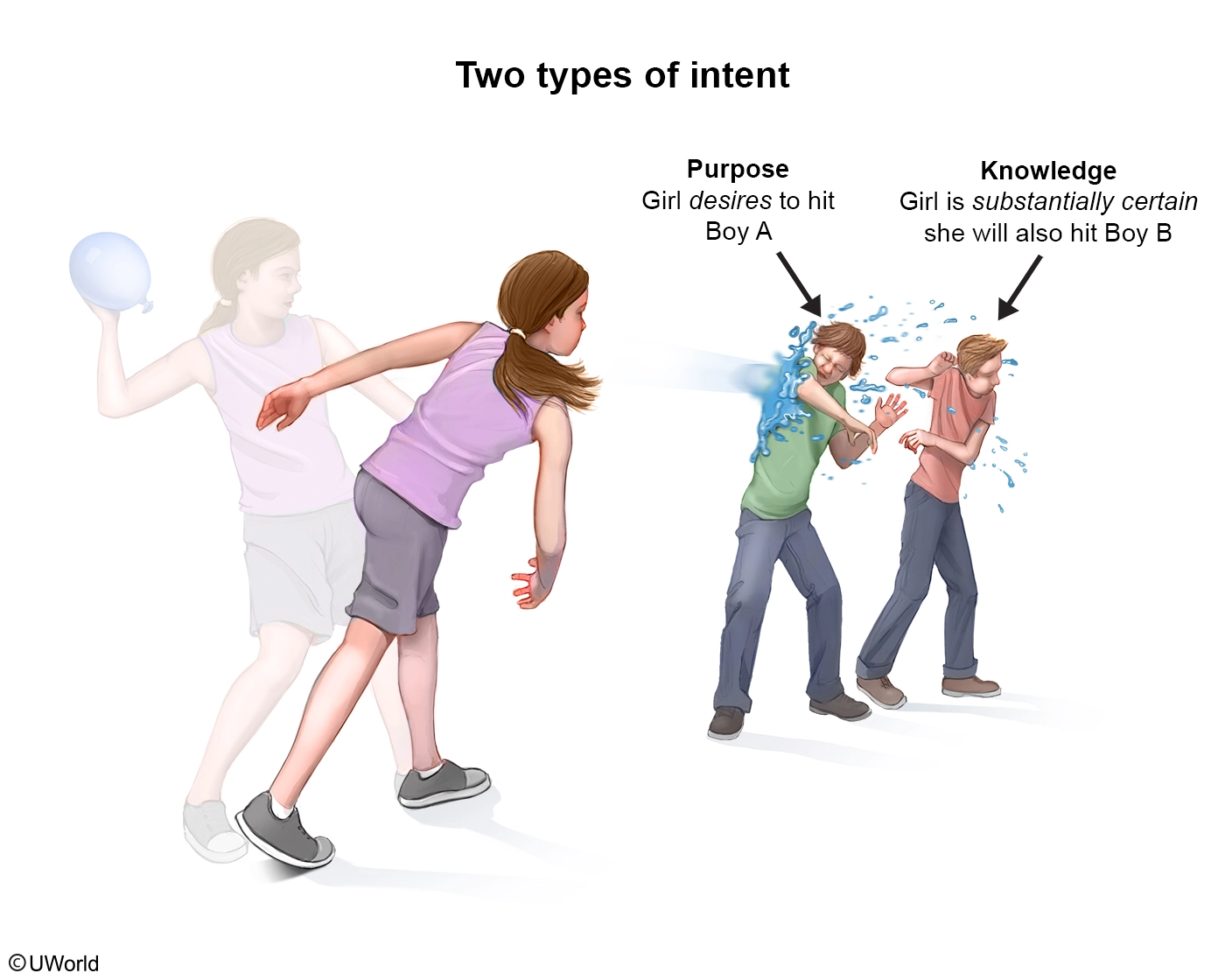
Get ready for the 2024 Texas Bar Exam. Learn exam dates, costs, scores, pass rates, results, requirements, subjects, and practice with sample questions.

The Texas Bar Exam is one of the most important exams you will ever take, and if you pass, it will open the door to your future as a legal professional. In February 2021, Texas adopted the Uniform Bar Exam (UBE®). The UBE has been adopted by 41 states or jurisdictions, making it easier to transfer to participating UBE jurisdictions. This article will offer insights into Texas Bar Exam results, important dates, pass rates, subjects, cost, format, scoring, and more.
The UBE evaluates a candidate's readiness to practice law in any jurisdiction by assessing their competencies in general law principles, factual analysis, legal analysis and reasoning, and communication skills in these areas.
| Exam Sessions | Exam Component | Format & Hours |
|---|---|---|
| Tuesday Morning | MPT | 2 Task Items, 3 Hours |
| Tuesday Afternoon | MEE | 6 Essays, 3 Hours |
| Wednesday Morning | MBE | 100 Questions, 3 Hours |
| Wednesday Afternoon | MBE | 100 Questions, 3 hours |
The MBE consists of 200 multiple-choice questions administered in two three-hour sessions on day two of the exam. However, 25 of these questions are unscored pretest questions that the National Conference of Bar Examiners (NCBE®) experiments with for future exams. There are seven subject areas:
Examinees must select the best of four possible answers. Final scores are based on correct answers only.
The MEE consists of six 30-minute essay questions administered in a three-hour session in the afternoon of the first day of the exam. Each essay is assessed on a 6-point scale, with a 6 being the highest possible score and a 0 the lowest.
The MEE is designed to test an examinee's written communication proficiency, application of the law to various scenarios, and reasoning ability. According to the NCBE, the official purpose of the MEE is to test an examinee's ability to:
The MPT consists of practical questions using instructions, factual data, cases, statutes, and other reference material supplied by examiners. Candidates will answer two cases presenting simulated real-life scenarios to demonstrate their lawyering skills. Each case is assessed on a 6-point scale, with a 6 being the highest possible score and a 0 being the lowest possible score.
For details on the UBE, check out our in-depth article, About the Uniform Bar Exam (UBE).The timely filing date is perhaps the most important date to mark in your calendar when preparing your application for the Texas Bar Exam. This deadline falls on September 1, 2023, for the February exam and February 1, 2024, for the July Exam. Failure to submit by these deadlines will result in extra fees. Below are details concerning important dates and requirements.
Thousands of hopeful examinees take the Texas Bar Exam every year. To sit for the exam, individuals must meet either of the following requirements:
The UBE is administered, graded, and scored across all UBE member jurisdictions, allowing candidates to take and pass one UBE exam and conveniently transfer their scores to other (member) jurisdictions where they intend to practice law. Each year, the UBE is scheduled on the last Tuesday and Wednesday of February and July. Please take note of the following relevant exam dates and filing fees:
| Exam Date | February 27-28, 2024 | July 30-31, 2024 |
|---|---|---|
| Fee | $300 | $300 |
| Registration Opens (10 am CT) | June 30, 2023 | December 4, 2023 |
| Timely Deadline | September 1, 2023 | February 1, 2024 |
| $150 Late Filing Fee Deadline | November 1, 2023 | April 1, 2024 |
| $300 Final Filing Fee Deadline | December 1, 2023 | May 1, 2024 |
The February 2024 Texas Bar Exam site is at the Austin Convention Center. However, the July 2024 exam has multiple sites. See table below:
1200 Ballpark Way
900 Barton Springs Road
901 North Loop 1604
1114 S. University Parks Dr.
To schedule your Texas Bar Exam, you must create an ATLAS account through the Texas Board of Law Examiners website. Once registered, complete the Bar Exam Application and submit it electronically with the fee. Next, you will upload all the required documents and arrange for any third party to send the provided documents.
Fees and costs associated with registering for the Texas Bar Exam vary depending on the examinee's status (in-state law student, out-of-state law student, attorney, etc.) and the date they file. Below is a detailed and up-to-date list of exam related fees.
Source: Texas Board of Law Examiners - Deadlines
Payment PoliciesAll Texas Bar Exam application payments are made online through your ATLAS account. There are no refunds or transferring of fees to future bar exams for those that end up not taking the exam. Any issues with processing should be forwarded to Texas.gov:
Bar exam costs can be prohibitive for most law school students and graduates. That’s why we recommend the following cost-savings options for your consideration to help you register and prepare for the Texas Bar Exam:
Two scholarship recipients will be selected from the Law Student Division applicant, and the application is open to both Texas law school and out-of-state law student members. Learn more .

The Texas Bar Exam consists of a written section on day one (MEE/MPT) and a 200 multiple choice exam (MBE) on day two. The MBE is the most heavily weighted portion of the test at 50%, followed by the MEE (30%) and the MPT (20%).
The written section of the exam is an examinee's chance to prove their ability to apply their legal knowledge and reasoning to legal scenarios. In contrast, the MBE tests fundamental legal principles regarding Civil Procedure, Constitutional Law, Contracts, Criminal Law and Procedure, Evidence, Real Property, and Torts.
To allow for score portability, the MEE portion of the Uniform Bar Exam has always consisted of the same six questions for all UBE jurisdictions. Similarly, the MEE Subject Matter Outline applies to all UBE jurisdictions. The following represent Texas Bar Exam subjects for the essay portion:
MEE subjects vary by exam version. For example, subjects may be paired or omitted altogether. Historically, some subjects (e.g., Civil Procedure) have appeared frequently, while others (e.g., Criminal Law) are rarely tested. Additional information on the list of subjects and subtopics can be found at MEE Subject Matter Outline.
Only 175 of the 200 MBE multiple-choice questions are actually graded. The remaining 25 are pretest questions for future exams. Examinees will spend two three-hour sessions on day two answering questions on the following subjects:
Quality speaks for itself. Try some of our free MBE sample questions below.
Select a Question sample.Select a Question sample.
A husband and wife were married in State A and lived there for 10 years before separating. One month later, the wife permanently moved to State B and immediately filed for divorce in a federal court in State B. The wife claims that she is entitled to $300,000 in alimony. The husband appeared in the action and has filed a motion to dismiss for lack of subject-matter jurisdiction.
Should the court grant the motion?
Federal courts cannot exercise diversity jurisdiction over cases involving:
A federal court must possess subject-matter jurisdiction to hear the merits of a case before it. Subject-matter jurisdiction can be established through either:
Here, diversity jurisdiction is established since the wife claims that she is entitled to $300,000 and the parties are citizens of different states (States A and B). However, federal courts cannot exercise diversity jurisdiction over cases involving probate matters or domestic relations. Instead, state courts have exclusive jurisdiction over these types of actions (Choice A).* Therefore, the husband's motion to dismiss should be granted.
*The probate and domestic-relations exceptions exist because states have a strong interest in these substantive areas and are more qualified to deal with the constant judicial involvement these types of cases require.
(Choice B) A challenge to subject-matter jurisdiction is never waived. However, a challenge to personal jurisdiction is waived if the defendant has voluntarily appeared in the case, unless it was a special appearance for the express purpose of objecting to personal jurisdiction.
(Choice D) An individual is a citizen of the state where he/she is domiciled—ie, physically present with the intent to remain indefinitely. Since the wife permanently moved to State B, she has established her domicile there.
Educational objective:
Federal courts cannot exercise diversity jurisdiction over cases involving probate matters or domestic relations. Instead, state courts have exclusive jurisdiction over these types of cases.
Bluebook Citations :
A congressional committee investigated the pharmaceutical industry and found that the high cost of prescription drugs purchased and sold in the United States negatively impacted the nation's economy and the health of its citizens. In response, Congress passed a statute that regulates "the retail prices of every purchase or sale of prescription drugs in the United States."
A group of pharmaceutical companies challenged the constitutionality of this statute in federal court.
What is the strongest argument in support of the constitutionality of this statute?

The commerce clause gives Congress broad power to regulate interstate and foreign commerce. This includes:
Since Congress's commerce power is broad, federal statutes are constitutional if there is any rational basis for concluding that the regulated activity substantially affects interstate or foreign commerce. This can be shown through express congressional findings.
Here, the federal statute regulates the retail prices of prescription drugs in the United States. Congress has the authority to regulate such products' interstate transportation, but this statute also regulates in-state purchases and sales (Choice C). Since the congressional committee found that the high cost of prescription drugs negatively impacted the nation's economy, it is rational to conclude that their aggregated in-state purchases and sales substantially impact interstate commerce. Therefore, this is the strongest argument to support this statute.
(Choice A) The taxing and spending clause empowers Congress to tax and spend for the general welfare. But regulating prices is not equivalent to taxing or spending.
(Choice B) Congress cannot regulate the prices of every domestic purchase and sale of goods since it cannot regulate purely in-state sales that do not substantially affect interstate commerce.
Educational objective:
The commerce clause empowers Congress to regulate (1) channels and instrumentalities of, (2) persons and things moving in, and (3) in-state activities that—singly or in the aggregate—substantially affect interstate or foreign commerce.
Bluebook Citations :
The owner of a new office building contracted with a well-known landscaper to design and install landscaping around the building for $30,000. The agreement was memorialized in writing, was signed by both parties, and called for a budget of $5,000 for trees, shrubs, sod, and materials. The contract required the landscaper to complete the work within six months. Due to an unexpected increase in the price of trees and shrubs, the landscaper abandoned the project and never completed any of the work.
Three years after the landscaper's deadline, the building owner sued the landscaper for breach of contract. In the jurisdiction, the statute of limitations for breach of a services contract is two years after the breach, and the statute of limitations for breach of a sale-of-goods contract is four years.
Can the owner recover damages from the landscaper?

Contracts for the sale of goods are governed by Article 2 of the Uniform Commercial Code (UCC), while contracts for services are governed by common law. However, some contracts involve the sale of goods and the rendering of services. To determine which law applies to a "mixed" or "hybrid" contract, courts ask whether its predominant purpose was the sale of goods or the rendering of services. The following factors are relevant to this determination:
Here, the building owner contracted to buy goods (eg, trees, shrubs, sod) and services (ie, designing and installing the landscaping). The owner likely hired the well-known landscaper due to his skill in performing landscaping services, and the $5,000 budget for goods was just one-sixth of the $30,000 contract price. Therefore, the contract primarily calls for services and is subject to the jurisdiction's two-year statute of limitations. And since the owner sued three years after the breach, the owner cannot recover damages from the landscaper.
(Choice A) The predominant-purpose test is unnecessary when a contract is divisible—ie, when the payment for goods can easily be separated from the payment for services. But here, the contract is likely indivisible since it combined the sale of the trees, shrubs, and sod with their installation.
(Choices C & D) The predominant-purpose test focuses on the parties' reason for entering the contract—not for breaching it. Therefore, it is irrelevant that the landscaper's breach was (1) a result of an increase in the price of goods or (2) willful.
Educational objective:
Sale-of-goods contracts are governed by the UCC, while services contracts are governed by common law. When a contract calls for the sale of goods AND the rendering of services, the contract's primary purpose determines whether the UCC or common law applies.
Bluebook Citations :
A man and a woman dated for several weeks. During that time, the man repeatedly asked the woman to have sex. Each time, the woman responded that she would not have sex with the man unless they were married. One evening, the man promised the woman that they would elope the following weekend if she would agree to have sex. The woman agreed and the couple had sex. The following weekend, the man told the woman that he had no intention of eloping and only made that promise to get the woman's consent. The woman reported the man to the police, who later arrested and charged the man with rape.
Is the man guilty of rape?
In most modern jurisdictions, rape is defined as sexual intercourse with another without that person's consent.* This means that rape did not occur if the victim consented to sexual intercourse. However, a victim's consent may be ineffective if it was obtained by fraud. There are two types of fraud:
As a result, consent obtained by fraud in factum is not a valid defense to rape, but consent obtained by fraud in the inducement is a valid defense.
Here, the man falsely promised the woman that they would elope if she agreed to have sex with him. Since the woman knew that the act to which she consented was sexual intercourse, her consent was obtained by fraud in the inducement (Choices A & C). This type of fraud did not negate the woman's consent, so the man is not guilty of rape (Choice D).
*At common law, rape was defined as (1) unlawful sexual intercourse (2) with a female who is not the defendant's wife (3) against her will by force or threat of force.
Educational objective:
Fraud in factum occurs when the fraud pertains to the nature of the act itself and negates a rape victim's consent. In contrast, fraud in the inducement occurs when fraud is used to gain consent to what the victim knows is an act of sexual intercourse and does not negate the victim's consent.
A plaintiff sued a defendant for negligence to recover damages that the plaintiff suffered as a result of a crash between the two parties. At trial, the plaintiff's attorney called the plaintiff's wife to testify as to what she witnessed on the day of the crash. On cross-examination of the wife, the defendant's lawyer elicited several responses that tended to show that the plaintiff's actions constituted contributory negligence. The plaintiff's attorney seeks to ask the wife several questions on redirect examination, but the defendant's attorney objected.
What is the strongest argument that the court must allow redirect examination of the wife?

Federal Rule of Evidence 611 gives trial courts the authority to exercise reasonable control over the mode and order of examining witnesses at trial. This includes the discretion to determine whether—and to what extent—redirect examination of witnesses should be permitted. But when a party raises a significant new matter while cross-examining a witness, the court must allow the opposing party to address that matter through redirect examination.
Therefore, the strongest argument for allowing redirect examination of the plaintiff's wife is that the plaintiff's attorney seeks to reply to significant new matters that were raised on cross-examination.
(Choice A) A party is expected to elicit all significant information during direct examination of a witness. Therefore, a court need not permit redirect examination to allow the party to provide information inadvertently omitted on direct examination.
(Choices B & C) Redirect examination is generally limited to significant new matters raised on cross-examination. Therefore, a party is not entitled to redirect examination to (1) reiterate information like the necessary elements of the claim or (2) reply to all matters addressed in cross-examination.
Educational objective:
When a party raises a significant new matter on cross-examination of a witness, the court must allow redirect examination by the opposing party to address that matter.
Bluebook Citations :
Twenty years ago, a man who owned a 20-acre ranch agreed to sell all of his mineral rights to his neighbor. The man executed a warranty deed conveying the mineral estate to the neighbor, who failed to record the deed.
The following year, a woman moved her mobile home onto an undeveloped five-acre portion of the man's ranch. After the woman had lived on the property for 10 years, a local drilling company began operations on a nearby tract to drill a natural gas well. Believing that the woman owned the property, the drilling company approached the woman about leasing the mineral rights on her property and requested that the woman sign a lease of her mineral rights. The woman signed the lease as requested, and it was promptly and properly recorded. The drilling operations were successful, and the drilling company prepared to distribute profits from royalties. However, a dispute arose between the neighbor and the woman, as both parties claim ownership of the minerals.
The period of time to acquire title by adverse possession in the jurisdiction is 10 years.
In an action to determine title, is the court likely to award title to the mineral estate to the woman?

An adverse possessor can acquire title to land owned by another if his/her possession of the land is:
If the surface and mineral estates are owned by the same party, then the adverse possessor will acquire title to both estates—even if only one estate is actually possessed. But if the mineral estate has been severed from the surface estate (ie, the surface and mineral estates are owned by different parties), then the adverse possessor will only acquire title to the estate that is actually possessed. The mineral estate is actually possessed when the adverse possessor mines or drills wells on the land.
Here, the neighbor purchased the mineral estate from the man, thereby severing the mineral estate from the surface estate. And since the woman merely lived on the property for the 10-year statutory period—she did not attempt to mine or drill a well on the mineral estate—she actually possessed only the surface estate during that time (Choice D). This means that the woman did not adversely possess the mineral estate, and the court is not likely to award her title to that estate.
(Choice B) Adverse possession of a mineral estate requires the commencement of drilling or mining operations. Merely signing a lease of the mineral rights is not enough.
(Choice C) A deed need not be recorded to be valid, so the neighbor's failure to record has no impact on whether the woman adversely possessed the mineral estate.
Educational objective:
If a mineral estate has previously been severed from the surface estate (ie, surface and minerals owned by different persons), then an adverse possessor can only acquire title to the mineral estate by actually possessing the minerals (eg, by mining or drilling wells).
A teenager was riding a bicycle when she saw a classmate walking toward her. The teenager rode quickly toward the classmate, knowing that he would think she would run into him on her current trajectory. The teenager was not purposefully trying to harm or touch him. The classmate saw the teenager riding toward him and yelled at her to stop. The teenager swerved at the last moment and avoided hitting him. The classmate had a panic attack because he thought that the teenager would hit him.
Is the classmate likely to succeed if he sues the teenager for assault?

Assault occurs when (1) a defendant intends to cause the plaintiff to anticipate an imminent, and harmful or offensive, contact with the plaintiff's person and (2) the defendant's affirmative conduct causes the plaintiff to anticipate such contact. The intent requirement is met when the defendant acts with either:
Here, the teenager rode her bicycle directly at her classmate, causing him to think that she would hit him (anticipation of imminent contact). And since the teenager knew with substantial certainty that the classmate would think she would run into him, she acted with the requisite intent. As a result, the classmate is likely to succeed in a suit against the teenager for assault.
(Choice A) Assault merely requires that the plaintiff be placed in anticipation of imminent contact. Actual bodily contact is not required. Therefore, the fact that the teenager did not make contact with the classmate is irrelevant.
(Choice B) The intent to make contact with the plaintiff is a requirement for battery, but assault merely requires the intent to cause the plaintiff to anticipate imminent contact. Therefore, the fact that the teenager did not purposefully try to harm or touch the classmate does not absolve her of liability for assault.
(Choice D) Extreme and outrageous conduct (i.e., conduct that is unacceptable in civilized society) is an element of intentional infliction of emotional distress—not assault, which only requires intentional conduct.
Educational objective:
For assault, intent exists when a defendant acts with the purpose (desire) or knowledge (substantial certainty) that his/her conduct will cause the plaintiff to anticipate an imminent, and harmful or offensive, contact.
Take a look at a typical competitor sample question below. Their practice questions might parody the exam, but ours consistently meet or exceed exam-level difficulty. Their limited explanations address the right answer choice but do not go the extra mile to explain the wrong choices – so you don’t make the same mistakes on exam day.
A mother gave her land to her two kids, a son, and a daughter, as joint tenants. The son built two adjoining homes on the land. He lived in one house and rented the other. The daughter lived out of the country and never visited the land. The daughter needed money, so she sold her interest in the land to her ex-boyfriend. Her ex-boyfriend immediately hired a developer to build a third home on the land. Soon after the daughter had sold her interest in the land, she was killed in a motorcycle accident. The ex-boyfriend is now asking the court for a judicial partition of the land. The son contends that upon his sister's death, he was now the sole owner of the land.
How should the court rule?
Correct answer: B
The passing UBE score in Texas is 270 out of 400. The total score is split 50-50% between the written section of the test administered on day one (MEE/MPT) and the 200 multiple-choice MBE administered on day two. Details of how each section is graded are as follows:
The UBE employs scaled scoring on the MEE, MBE, and MPT using a statistical method known as equating. Basically, this method transforms raw scores into scaled scores in order to ensure fairness across test versions. For example, if Jack takes his exam in February and Jill takes hers in July, they will not be taking the exact same exam. A team of experts reviews each exam and determines their relative difficulty.
Therefore, if Jack’s exam version is deemed more difficult than Jill’s, Jack and his cohort will receive a bonus to their score via scaled scoring. Unfortunately, the NCBE does not release data on how they calculate your scaled score, so when you get your results, you will not receive your raw score.
The MEE and MPT are combined into a scaled score out of 200. The three test sections combined produce a scaled score out of 400. This means that should you do poorly on the written section, you can make up for it on the MBE and vice versa.
Before you can be licensed to practice law in Texas, you must also pass the Multistate Professional Responsibility Examination (MPRE®) with a scaled score of 85 or higher. The MPRE features 60 multiple-choice questions administered over two hours.
As is common with bar exams across the United States, the Texas Bar Exam's pass rate for repeaters is considerably lower than for those taking it for the first time. This is likely because many repeat takers don't substantially modify their study habits.
| Exam | Overall Pass Rate | First-Timer Pass Rate | Repeater Pass Rate | Results Release Date |
|---|---|---|---|---|
| July 2024 | 71% | 81% | 31% | October 13 |
| Feb. 2024 | 45% | 59% | 34% | April 20 |
The Texas Bar Exam passing rates have fluctuated significantly from year to year. Below are the pass rates for the Texas Bar Exam over the past three years: